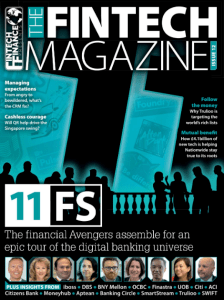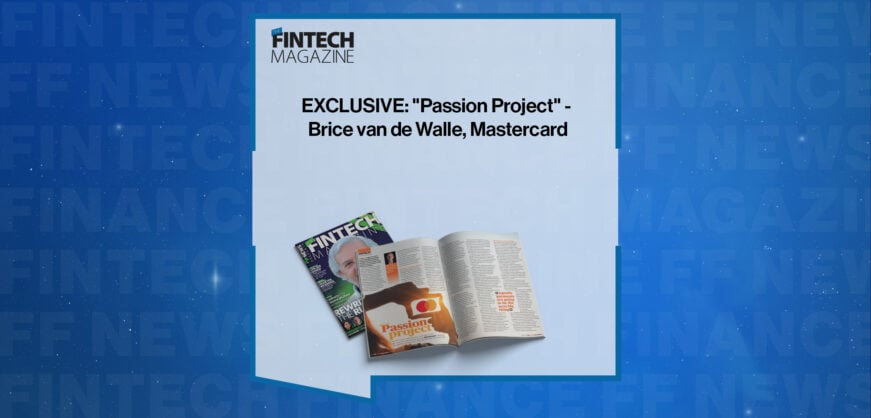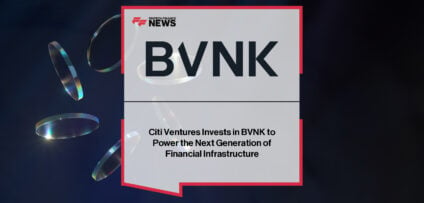Breaking News

Mastering the art of digital
BNY Mellon’s Senior Executive Vice President and Head of Digital, Roman Regelman, has assembled a crack team to propel the bank’s digital transformation to the next level
In a business climate driven by strong digital forces, disruption and rapid innovation, every company is now a technology company – or, at least, it’s striving to become one.
Customers are demanding new methods of engagement that are contextual and tailored for individual usability. And the opportunities are there for today’s leaders to shape tomorrow for every corner of their organisation – imagining a future and then harnessing innovation to create a digital transformation.
Worldwide banking and financial services giant, BNY Mellon, is looking at new ways to provide services to its clients and drive dramatically improved quality and efficiency.. But how can a 240-year-old legacy institution working in 35 countries with 55,000 employees and tens of trillions of dollars under its custody or management, hope to create a
digital phoenix?
Global digital transformation expert Roman Regelman was appointed to the position of senior executive vice president and head of digital at BNY Mellon last year. He says the answer to that question lies in a rigorous re-aligning of perspectives – putting the customer experience, not the product, first.
Reporting directly to the CEO and chairman of the board, Regelman’s brief is to lay the path for a digital future and invest in client and internal digital capabilities, including data management, analytics, artificial intelligence (AI), machine learning and robotics. He will be helped by a new global team, which he has been tasked with building by attracting top digital talent.
In April 2019, the bank announced a slew of senior appointments. Michael Demissie from rival State Street was hired to lead the custodian bank’s activities in areas such as AI, machine learning and blockchain. He is now head of advanced digital solutions. Alina Peradze was appointed digital business development leader and Janelle Prevost as client journey reimagination leader, a title that leaves no doubt as to nature of the task ahead.
Peradze will lead the build-out and launch of new digital businesses, while Prevost is spearheading BNY Mellon’s efforts to rethink how it delivers differentiated capabilities for its clients to maximise end-to-end value.
With his growing bench of digital talent, Regelman is already transforming ‘business as usual’ and building on legacy systems.
“Technology by itself doesn’t create the insights,” he explains. “Thinking of our clients’ business – and embedding the data into their operations and the way they do business, that’s what really creates the differentiated advantage.”
It’s a lesson that a colleague at BNY Mellon, Massimo Young, head of data solutions in investment management, learned early on. He admits that when he started working for the firm, he had a philosophy of ‘machine learning is cool and I want to go apply it’.
He made that pitch to a senior executive – who threw it right back at him asking ‘why should we do that?’. So, his group went through a demanding data integration project to provide portfolio analytics, pulling information together from different source systems, understanding it, cleaning it, documenting it and making sure the business and information technology experts saw eye-to-eye on everything. In the end, the new portfolio analytics were helpful — they just didn’t require machine learning at all.
Regelman has spent 20 years in the industry, as a consultant working across the globe for fintech startups and larger companies. At BNY Mellon he is relishing the opportunity to ‘change the bank and change the industry’, always with customers at the forefront – although it would be wrong to think that, until his arrival, the bank had made no progress towards that horizon. In fact, by 2017 it already had more than 220 bots running across its estate, giving the bank a reputation for early adoption of AI with the ultimate aim of improving customer service.
Two of the firm’s most recent digital improvements, from a client-facing perspective, have been in the corporate and investment divisions. Both are practical applications to solve real-world problems. The first is an escrow account opening service for lawyers and other agents; the second is a tracker tool for investors, developed in response to changing sentiments – and, in some territories, regulation – on environment, social and governance (ESG) reporting.
Escrow Advantage streamlines the whole process by offering the ability to initiate an escrow relationship ‘in minutes’. It also creates a more secure mechanism for the collection of highly confidential information. Clients and law firms can start the account opening process from a smart phone, tablet or desktop by utilising a secure know-your-customer (KYC) process designed to capture all required information in one step and avoid unnecessary correspondence.
Furthermore, it allows registered users to delegate some or all of the tasks to other registered users, such as internal peers or other parties involved in the transaction.
BNY Mellon has also recently debuted a range of reporting tools to track investments, based on ESG issues and United Nations Global Compact
(UNGC) principles.
The launch comes as regulators propose new ESG-related requirements, including clauses within the EU’s Directive on Pensions (IORP), which came into effect in January, requiring pension funds to disclose the relevance and materiality of ESG factors and how they are being taken into account for risk management processes.
BNY Mellon’s clients will now be able to view their total ESG and UNGC scores on equities at the account level, versus relevant benchmarks over time.
Whether you consider digital to be the proliferation of devices connecting us with services of all kinds in real time, or the constructive use of data and analytics to deliver an ever-improving end-client experience, no business or industry is immune from the competitive pressure to transform its means of delivering value to customers. Regelman admits there is still a lot of work to do at BNY Mellon, but he is building on what has already been done there.
“We have done a lot over the years. Even before I started there were digital programmes in place. We have innovation centres around the world, we’re building products and services. A big mission of mine is to coalesce all this together and have a strategy and a vision,” he says.
His vision is to digitise BNY Mellon across three horizons – core digitisation; client interaction and new products and services. Transformation isn’t easy, but what’s most important when designing an experience is focussing beyond the task at hand and considering how it adds value to the advisor-client relationship, he says.“It is done in stages so that the customer is getting a better experience. We’re getting knowledge, through data, about how this new experience is working, how the new processes are performing, and
we leverage that knowledge and data to create even better services and products.
“Any customer is an individual who wants to have a great experience and the bank, the institution, needs to deliver on that experience in the most efficient, effective way.
We’re not creating a parallel institution. People have done that; they create something that is a shiny toy, but it fundamentally doesn’t change the value proposition for the existing customers.
“What we’re doing is embedding the techniques from challenger banks, we’re also embedding the techniques from fintechs, startups and our big technology partners. You get the best of all worlds. You get trust, you get reputation, you get security, you get infrastructure – that we have – but you also get the fantastic digital-first native experience.
“We have to digitise what we have, but we are also creating the digital-first client experience and a digital-first delivery system for that. We’re working from both ends. By working these three horizons simultaneously, we allow ourselves the opportunity to scale, while servicing the clients at the same time.”
How will digital technologies transform the longer-term strategies of global financial institutions and payment service providers? There’s no single answer. But in surveying the landscape of digital native companies, one observes (a) an innovative approach to understanding client needs and preferences through data and business intelligence, (b)
service designed around simplicity and self-service principles and (c) accelerated product innovation through client-centricity and a culture of experimentation and adjustment.
Those in the industry that adopt these lessons, while not abandoning the business practices that underpin client trust, will likely be winners.
For the time being, Regelman is focussing on the year ahead at BNY Mellon and continuing to help the company master the art of digital. So, what are his priorities for the next few months?
“Wonderful client engagement on the digital priorities, changing the way we work with our clients, cross-functional teaming, creating the digital results and really embedding the client experience, the client view, in everything that we do.”
This article was published in The Fintech Finance Magazine: Issue #12, Page 76.
- EXCLUSIVE: “Passion Project” – Brice van de Walle, Mastercard in ‘The Fintech Magazine’ Read more
- FreedomPay Drives Global Merchant Innovation Read more
- FIS Brings AI-Powered Advancements to Seamless, Personalized Digital Banking Experiences Read more
- Citi Ventures Invests in BVNK to Power the Next Generation of Financial Infrastructure Read more
- Nearly Two-Thirds of Global Retailers Say Payment Method Flexibility Drives Revenue Growth, ACI Worldwide Survey Finds Read more



















